A new study has been published comparing the patented 3DPump-Breakthrough pre-workout supplement pump ingredient to L-citrulline.[1] This article provides a breakdown of the data.
We've written about 3DPump-Breakthrough several times before (a full list of articles is at the bottom of this page). It's an extremely promising pre-workout pump ingredient sold by NutraShure that consists of three powerful components:[2]
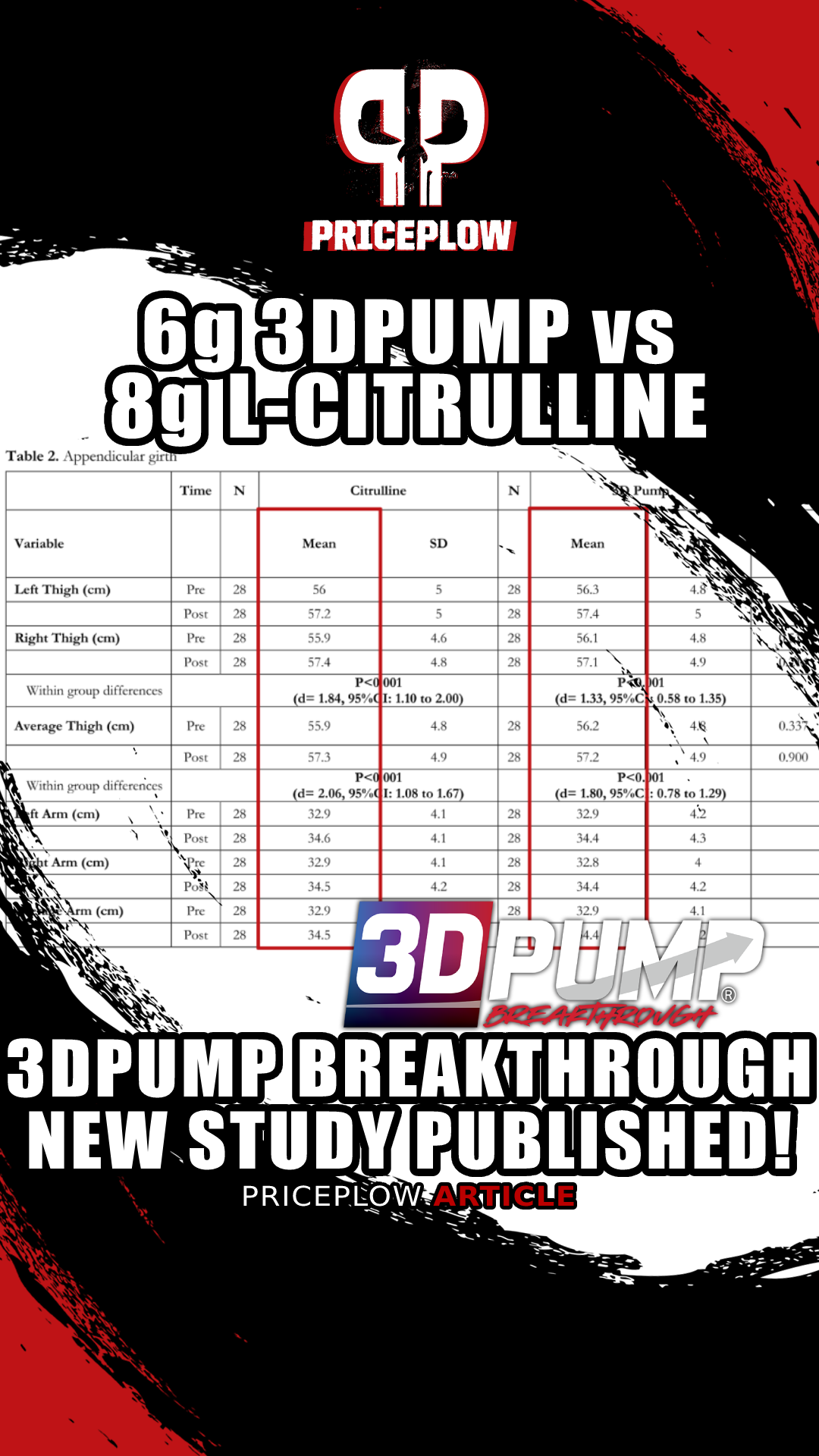
A new study has been published comparing 6 grams of 3DPump-Breakthrough against 8 grams of L-Citrulline! We dig into the details here on the PricePlow Blog.
- L-citrulline for nitric oxide production (3 grams)
- Glycerol for cellular hyperhydration (1.2 grams)
- Amla fruit extract for cardiovascular support (165 milligrams)
The preliminary 3DPump-Breakthrough data covered in our previous articles comes from a pilot study provided in the patent.[2] It describes the synergistic effects between two of 3DPump-Breakthrough's three ingredients: amla fruit extract and glycerol.
Subjects in the patent's pilot study were randomized to receive a placebo, glycerol, amla, or a combination of glycerol and amla. The results established the existence of impressive synergistic effects between glycerol and amla.[2]
Nitric oxide ingredients: Directly Taking on Straight L-Citrulline
Still though, if you want to break into the NO market, you have to demonstrate that your ingredient can beat pure L-citrulline, which is a safe, well-tested, and legally compliant nitric oxide booster that's normally quite affordable as a commodity. To take on this de-facto standard, you need a direct comparison between your ingredient and citrulline in a randomized controlled trial.
That's exactly what the latest 3DPump-Breakthrough study happens to be - a head-to-head comparison with a larger dose of citrulline![1]
La Monica et al. 2023: 6 grams 3DPump-Breakthrough vs. 8 grams L-Citrulline
To understand the study design, you have to understand what NO-triggered vasodilation really does to the body. Significant increases in blood and water circulation cause swelling, particularly in muscle tissue. In this case, swelling is a good thing. It signifies that the tissue has entered a state of cellular hyperhydration,[3-5] in which higher-than-normal amounts of fluid in muscle cells improve cellular nutrient access, resilience, and recovery.
This is what bodybuilders call the pump. It's a highly desirable state for both functional and aesthetic reasons, and is what motivates most consumers to take NO-boosting supplements.
The pump is where 3DPump-Breakthrough gets its name, and it's what the new study set out to measure directly.
The study’s methods
In this study, 22 men and 6 women with an average age of 29 years who were recreationally resistance-trained were recruited. They performed a preliminary exercise test to establish their baseline athletic performance and other physical characteristics. The study authors tracked a huge number of variables, but the ones we're most interested in are bilateral arm and thigh circumferences, which were used to quantify the extent of the pump induced by each treatment condition.[1]
After establishing the baseline, participants were randomized to receive either 6 grams of 3DPump-Breakthrough or 8 grams of L-citrulline. They then repeated the workout, and researchers tracked their physiological changes.[1]
Breaking down the 3DPump-Breakthrough dose by ingredient, the 3DPump group got:
- 3g L-citrulline
- 1.2g glycerol
- 165mg Amla fruit extract (Phyllanthus emblica)
So the amount of citrulline present was less than half what the citrulline group got
A crossover trial
This was a crossover study, meaning the subjects served as their own controls -- each group did both treatment conditions, with a washout in between.[1] Crossover study designs allow researchers to make direct comparisons between the effects of both treatment conditions on the same subjects.[6]
Prior to starting, participants were asked to cease pre-workout and hydration supplements for 7 days, abstain from training for 3 days, and abstain from caffeine and alcohol for 24 hours, fast for 10 hours (including no water), along with some other restrictions (such as no WADA-banned substances for 4 weeks).
The visits then looked like this:[1]
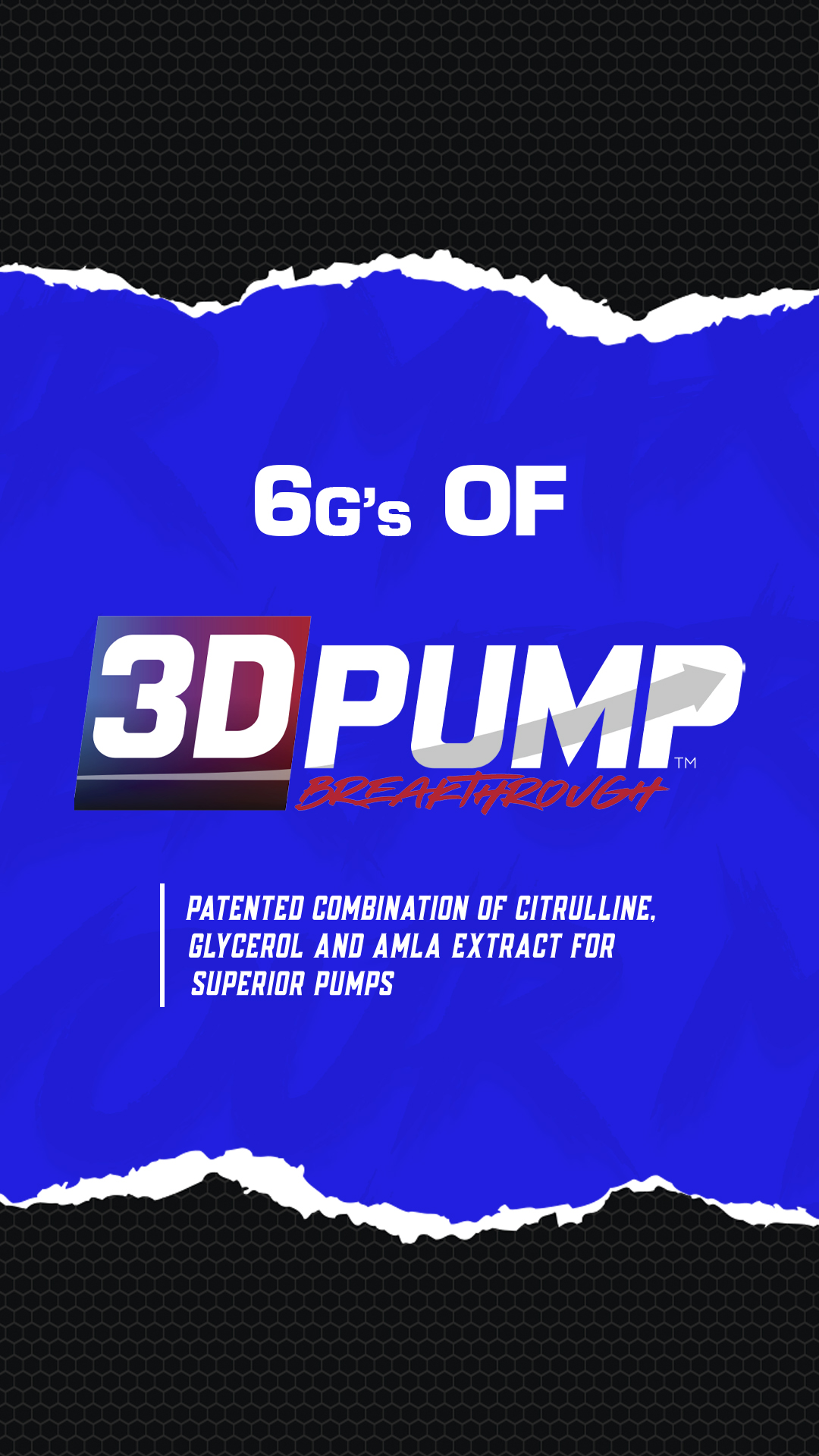
Image courtesy Performax Labs, who launched their latest version of HyperMax Extreme with 3DPump inside. Hypermax was not used in this study.
- Visit 1 - Screening
- Visit 2 (24 hours later) - Training Day 1 (Citrulline or 3DPump): Pre- and post-workout urine and blood draws
- Visit 3 (24 hours later) - Blood draws for inflammation markers
...washout...
- Visit 4 - Training Day 2 (3DPump or Citrulline): Pre- and post-workout urine and blood draws
- Visit 5 (24 hours later) - Blood draws for inflammation markers
This means that the group that got citrulline first went through a washout period with no supplementation, in order to let their biology reset, and then got 3DPump Breakthrough before doing a second experimental workout.
The exercises after consuming the supplement
35 minutes after ingestion of the supplement, the participants followed the following protocol in a heated room (80°-90°F):[1]
- Acclimation to heated room: 10 minutes
- Warmup: 30 minutes of walking/jogging on a treadmill in a heated room to get to 60-70% maximum heart rate.
- 5 minutes of rest
- Bilateral leg extensions and Smith machine squats:
- The participants were instructed to select a load where they could do 12-15 reps, but no more.
- 2 sets for 12 reps, 60 seconds rest between sets.
- Reps to failure for the third set.
- 3 minutes of rest, leg measurements taken
- Dumbbell arm curls and triceps rope pushdowns
- Same conditions as above: 12-15 rep load, 2 sets for 12 reps, 60 seconds rest, and reps to failure on the third set
-
3 minutes of rest, arm measurements taken
This was employed on both days 2 and 4 (training days), only with each participant receiving the alternative supplement they had not already received.
Now for the results:
Limb circumference – tie
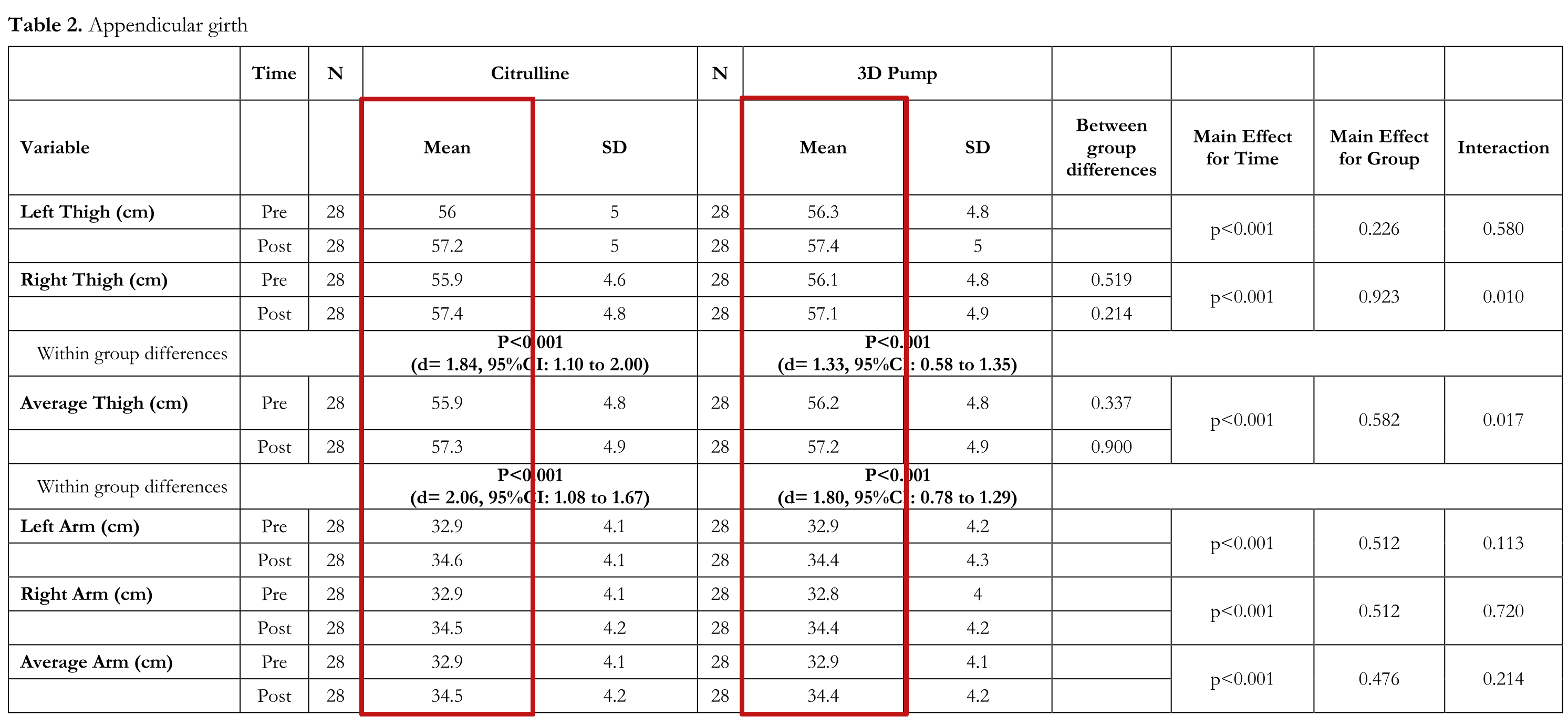
6 grams of 3DPump Breakthrough was about as effective as 8 grams of citrulline when it came to increasing thigh circumference[1] (aka the "leg pump").
The 3DPump and citrulline had basically the same effect on limb circumference – but remember, the dose of citrulline given in 3DPump was 5 grams less than the 8 grams of pure citrulline that the citrulline group got, and the total mass (6 grams of 3DPump) was 2 grams less.[1]
This means that gram-for-gram, 3DPump was more effective than the citrulline,[1] allowing for the use of less material. In this case, it means a 25% reduction in product volume and weight over regular citrulline.
Extracellular fluid and total body water (ECF/TBW) – 3DPump wins
However, 3DPump did beat citrulline when it came to other markers of hydration.
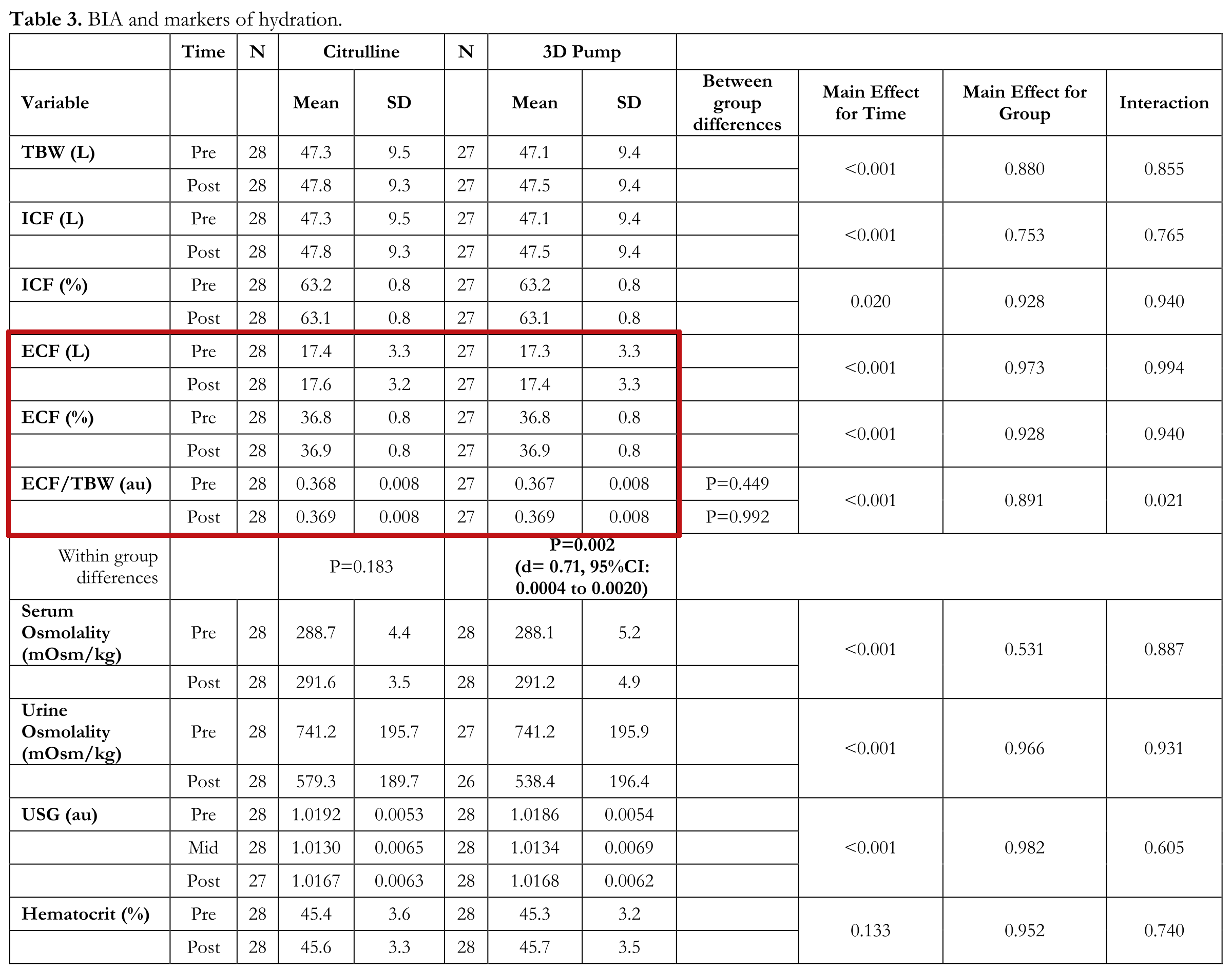
Although small in absolute terms, post-hoc statistical tests revealed that the advantages 3DPump displayed in terms of extracellular fluid (ECF) and total body water (TBW) were statistically significant and causal.[1]
The 3DPump group showed a bigger increase in their ratio of extracellular fluid (ECF) to total body water (TBW), an important marker of hydration status and potential, than did the citrulline group. Although it looks small, statistical tests demonstrated that this difference was statistically significant and caused by 3DPump.[1]
Inflammation and muscle damage – tie
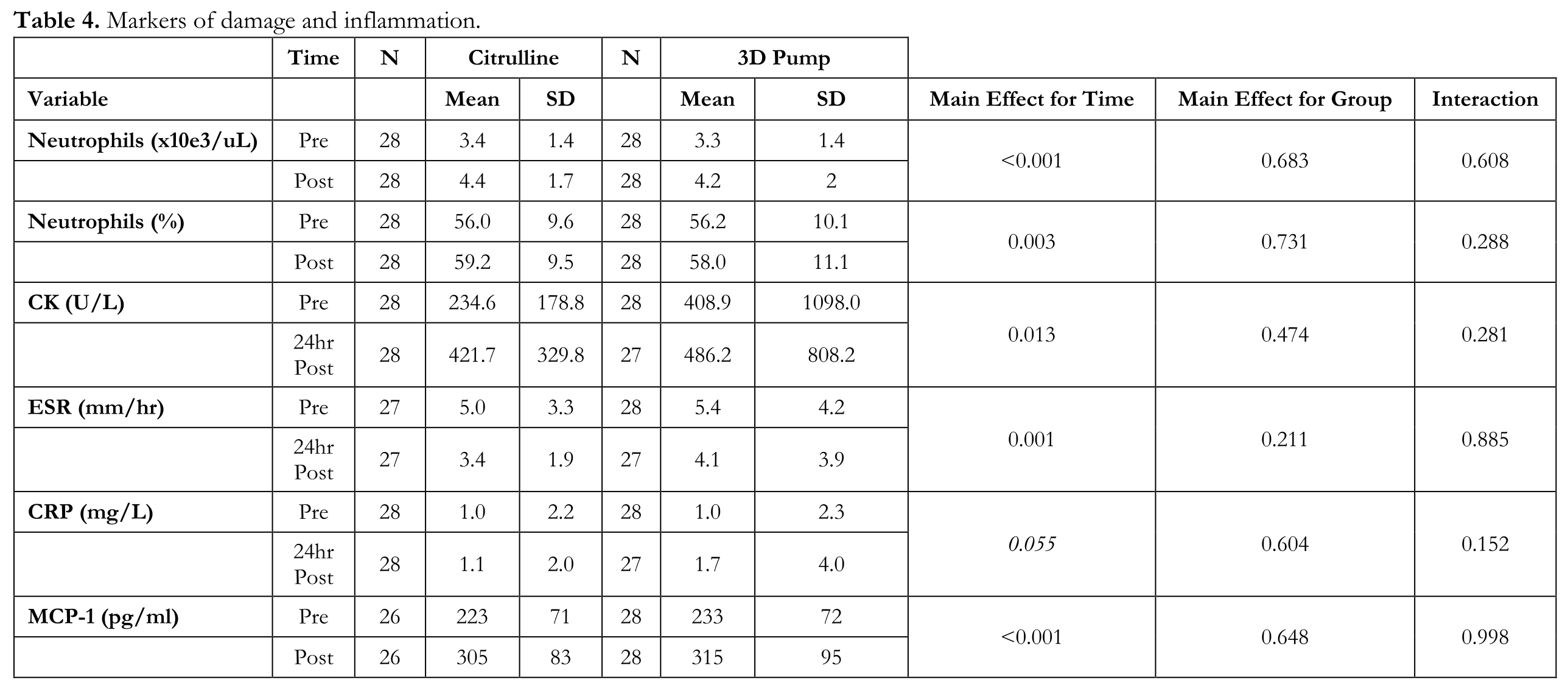
Markers of inflammation and muscle damage were similar between both groups for both treatment conditions.[1]
The researchers also monitored indicators of muscle damage like neutrophil levels, creatine kinase (CK), erythrocyte sedimentation rate (ESR), and monocyte chemoattractant protein-1 (MCP-1).[1] The results showed that when it came to mitigating post-workout muscle damage and inflammation, 3DPump was as effective as citrulline.[1] Both groups showed increased muscle damage and inflammation post-workout, but there was no difference between the groups.[1]
Perceived muscle pump, focus, energy, and recovery score – Tie

When asked to rate their satisfaction with each product, subjects indicated that it was about the same.[1] You can consider this the particpants' "review" of 3DPump vs. Citrulline
Besides objective metrics of efficacy, the researchers also asked the subjects for their subjective satisfaction using an instrument called the visual analog scales (VAS). You can see the aspects of recovery and well-being measured by the VAS in the inset image labeled table. In a nutshell, the study participants found 3DPump to be as effective as citrulline.[1]
Repetitions to failure – tie

Both treatment conditions enabled subjects to perform the same number of repetitions before failure.[1]
The authors also tested the number of repetitions to failure the subjects were able to perform on a variety of exercises. This is a measure of endurance – a key dimension of performance improved by NO boosters. Once again, 3DPump-Breakthrough was as effective as citrulline in boosting endurance.[1]
Cardiovascular function – 3DPump wins
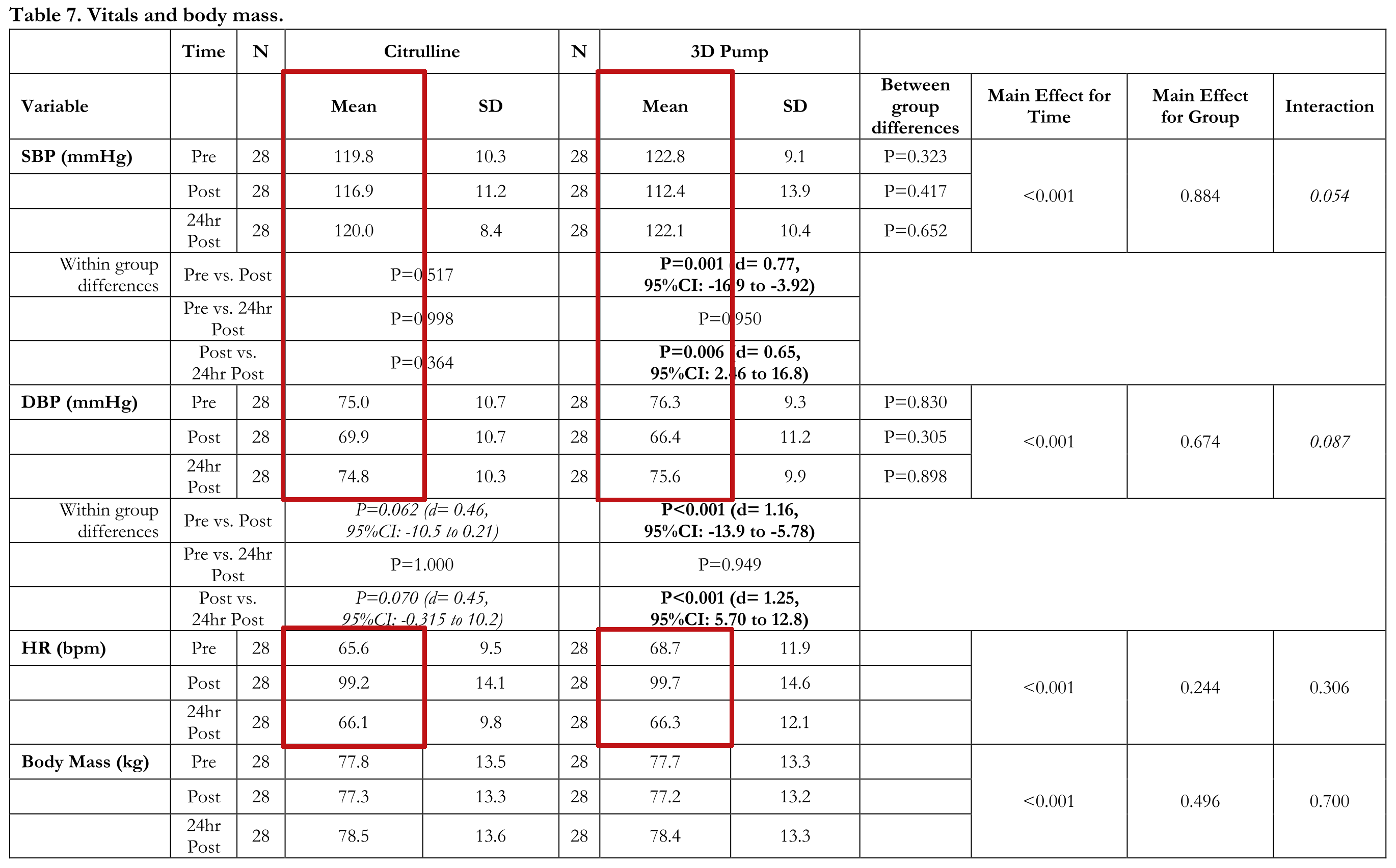
Unlike citrulline, 3DPump-Breakthrough caused significant reductions in systolic blood pressure, diastolic blood pressure, and heart rate 24 hours after exercise.[1]
Cardiovascular function is an important aspect of performance and recovery – the lower your heart rate and blood pressure at a given level of exertion and the faster your heart rate returns to baseline following exercise, the fitter you are. Faster heart rate recovery is associated with superior athletic performance, and even decreased mortality.[7,8]
With that in mind, it's very interesting that even though it was tied with citrulline on most indices measured by the study, 3DPump-Breakthrough showed a clear advantage over citrulline for decreasing blood pressure and heart rate after exercise. Only the 3DPump-Breakthrough group had significantly lower blood pressure and heart rate 24 hours after exercise.[1]
Body mass – tie
Citrulline and 3DPump-Breakthrough had about the same effect on overall body mass (see our inset image just above for table 7 from the study).[1]
Important: Fewer adverse events with 3DPump-Breakthrough!
As we said earlier, the main problem with citrulline supplementation is the large dose required for optimal effect sizes. Taking multiple grams of an isolated amino acid can cause gastrointestinal distress and other issues in some users, which is one of the main reasons that ingredient designers have been moving toward more efficient NO boosters.
This is one area where 3DPump-Breakthrough really shines. Here's a direct quote from the study:
"Participants appeared to tolerate the investigational products well, however ~36% of subjects (10 out of 28) during the Citrulline condition felt lightheaded, nauseous, had a headache, and even regurgitated during and/or after the workout, whereas ~21% of subjects (5 out of 28) during the 3D PUMP condition felt lightheaded during and/or after the workout and had diarrhea 2 hours post workout."[1]
That's a 50% reduction in the rate of adverse events! PricePlow's editorial opinion is that the powerful antioxidant and anti-inflammatory factors in amla extract, combined with the much lower dose of citrulline, is responsible for this result.
Background: Why are we here anyway?
If you're completely new to this space, let's take a step back and recap the purpose. We frequently cover nitric oxide (NO) boosters on the PricePlow Blog, often in terms of pre-workout supplements. While we haven't crunched the numbers, it's likely the topic that comes up most often in our analyses of multi-ingredient formulas.
This is no wonder, either – nitric oxide is incredibly important for both health and athletic performance.
The benefits of nitric oxide
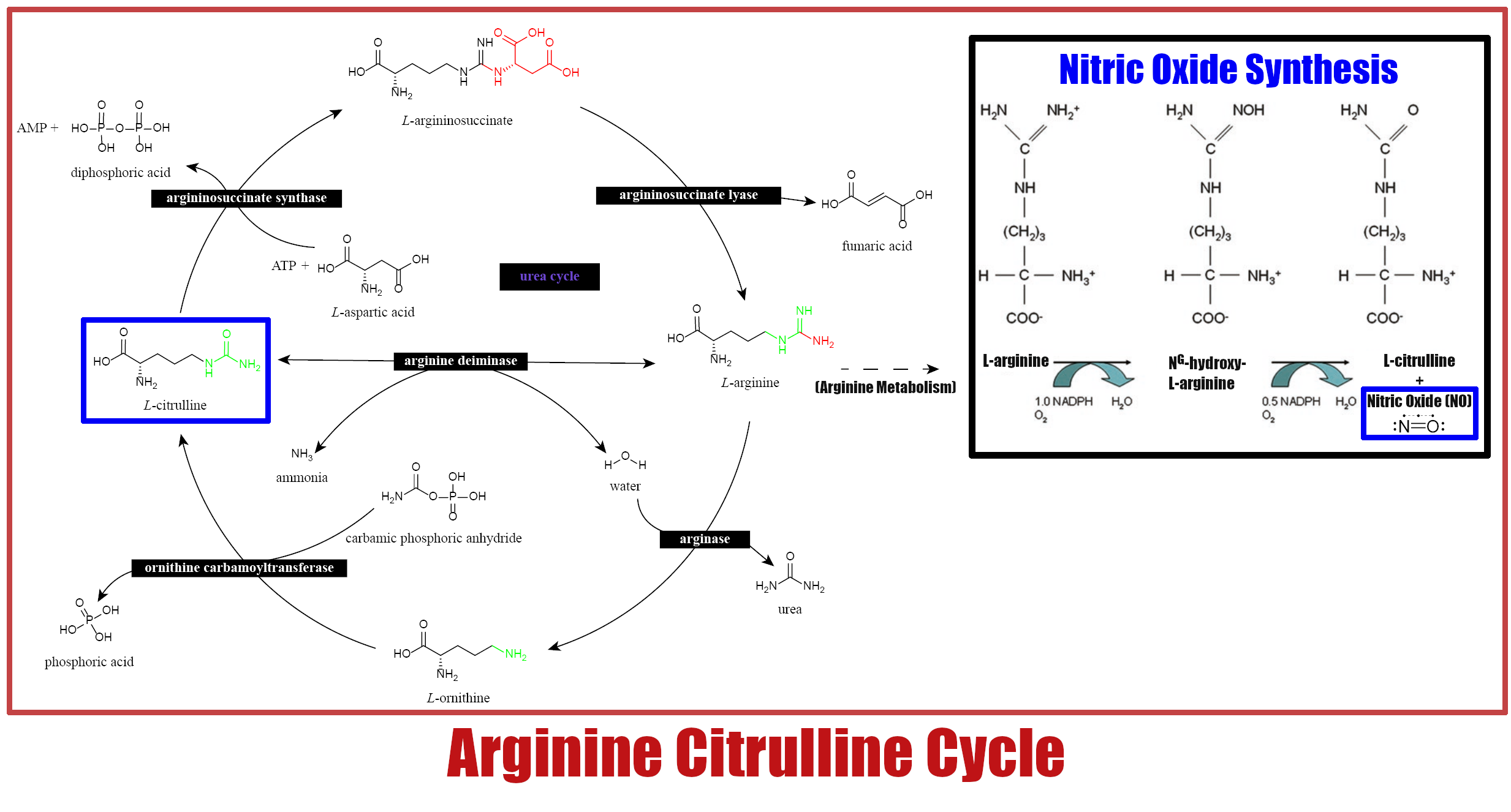
The Arginine Citrulline Cycle with a breakout showing the arginine-to-nitric oxide reaction. Image courtesy Wikimedia with added biochemistry sources.[9,10]
NO is the gaseous molecule that, when generated by the enzyme endothelial nitric oxide synthase (eNOS), triggers vasodilation, a phenomenon where blood vessels expand in diameter.[11,12] That increase in arterial volume means your body can move the same amount of blood with less effort, naturally leading to lower heart rate and blood pressure at any given level of exertion.
This decrease in cardiovascular strain can obviously be good for health,[13] but can also lead to improvements in power output, endurance, and post-workout recovery.[14]
Suffice it to say, NO upregulation is a lucrative and compelling mechanism for supplement formulators to target. However, the industry has gone through fits and starts in its search for its preferred NO booster.
From arginine to citrulline to... the next generation of ingredients
L-Arginine, the first ingredient to fill this role, was eventually discarded in favor due to its low bioavailability[15-18] and side-effect profile at the high doses required to make it work.[19,20] The current contender, citrulline, is still cheap and effective compared to arginine,[21] but comes with one big drawback: you need huge doses to maximize returns on its pathway to arginine and nitric oxide.[13,22]
Thus, L-citrulline's position is now being challenged by a new generation of designer ingredients, and 3DPump-Breakthrough, which indeed contains some citrulline itself, has officially and successfully thrown its hat into the ring.
Conclusion – 3DPump-Breakthrough Exploits Synergy Between Ingredients
Summing up the new study's results, 3DPump-Breakthrough was as effective, as or superior to, citrulline in every dimension of health and performance measured for the study. But remember, it accomplished all of this with a smaller dose. Participants only got 6 grams of 3DPump compared to 8 grams of citrulline – and the amount of citrulline used in 3DPump was only 3 grams.
This means that, to achieve impressive efficacy, 3DPump-Breakthrough exploits synergistic effects between its three ingredients, citrulline, glycerol, and amla. We strongly consider the amla extract to be the reason why 3DPump excelled so well in the cardiovascular function parameters, but the improved hydration from its glycerol component could promote that as well.
We'd be very curious to see the results of a study comparing equivalent doses of 3DPump-Breakthrough and citrulline. We believe that dose-matched 3DPump would outperform the citrulline by an impressive margin. After all, most supplements don't include 8 grams of pure L-citrulline, although there are a few that go that high and beyond.
Regardless, we're excited to see research showing that pump ingredients provide actual pumps. We often see numerous metrics, but don't always get to see actual girth, making this study one to keep around in the world of active nutrition.
What's next for 3DPump-Breakthrough and the team at NutraShure? You can sign up for our 3DPump and NutraShure news alerts below so that you're notified about new research and products using the ingredient. After that, we'll show a list of all blog posts mentioning 3DPump:

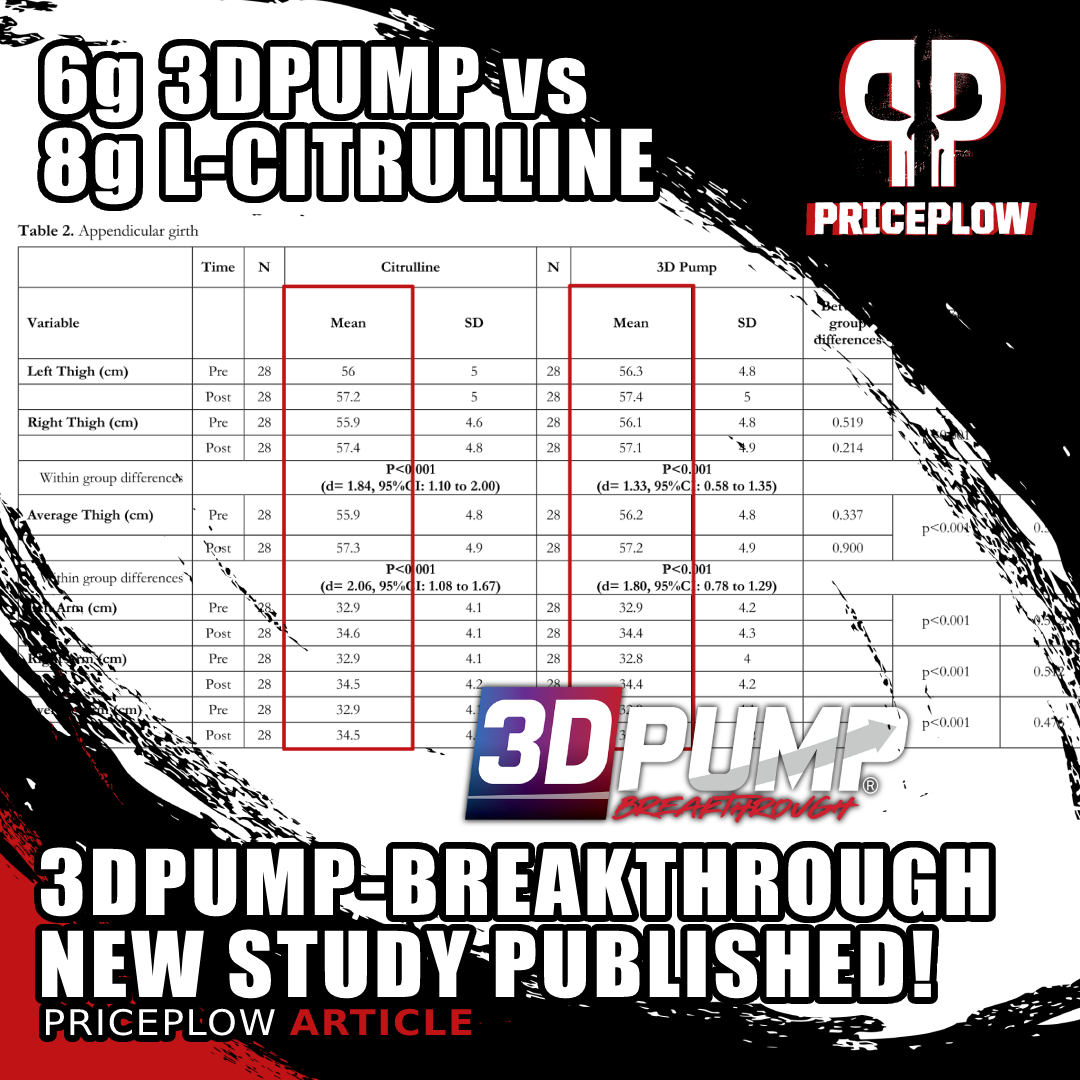


Comments and Discussion (Powered by the PricePlow Forum)